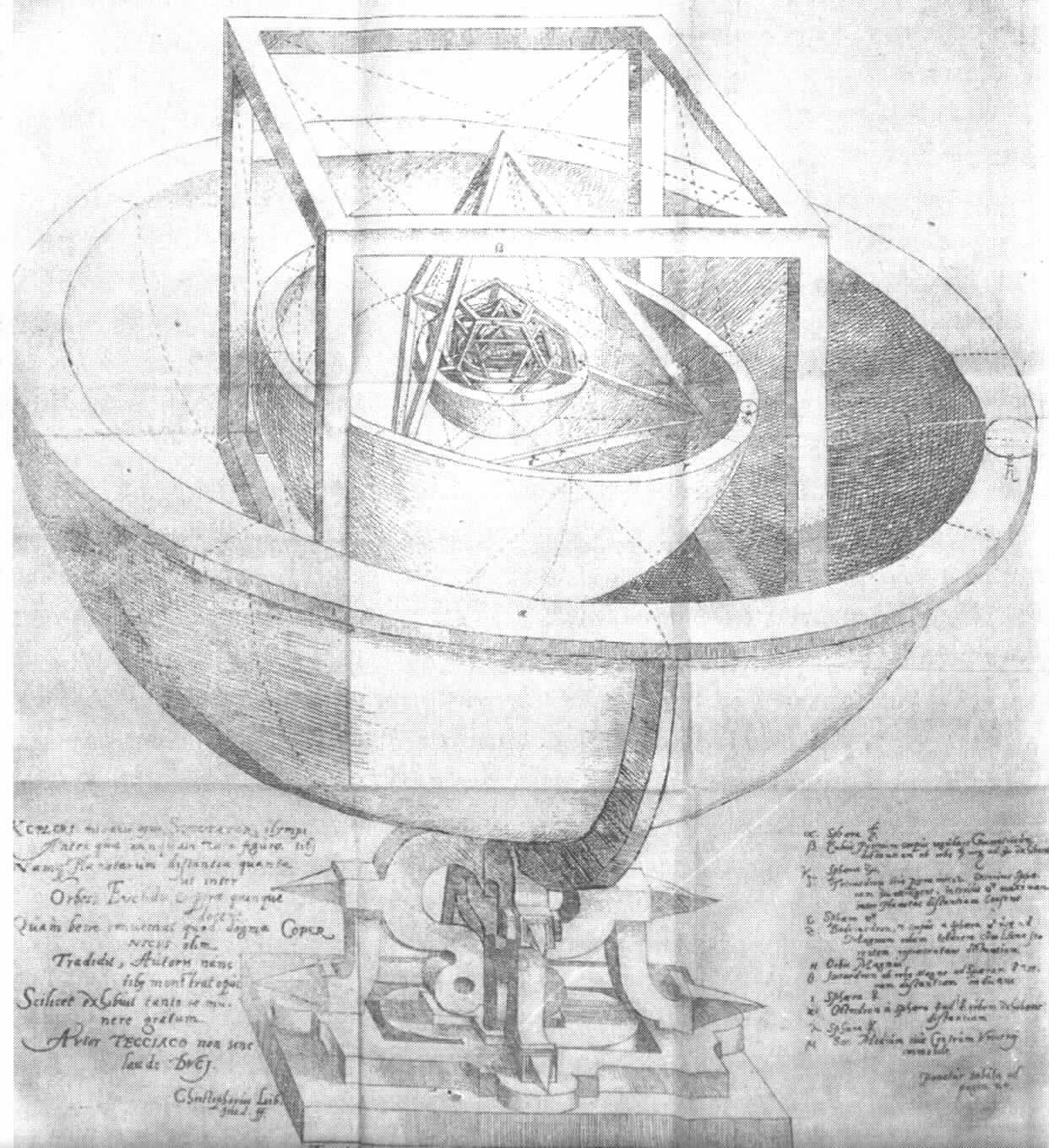Kepler
(Czech?, ~1600)
Copernicus, as previously discussed, was responsible for radically transforming ancient astronomy. However he had kept with Ptolemy's idea that the planets moved in combinations of uniform circular motion. It was Johannes Kepler's turn now to makes some changes that would prove to be the breaking point for ancient astronomy.
Kepler proved himself to be one of the best mathematical astronomers of his time. He had an abundance of patience, great calculating skills and a relentless drive to understand. He was a believer in Copernican theory and his plan was to prove these theories correct. Kepler's model of the universe, like Copernicus', was based on the same six planets which circled the sun - Mercury, Venus, Earth, Mars, jupiter, and Saturn. The difference was that he did not believe that they travelled on nested spheres rather on their own where their relative sizes were fixed by the five regular solids. These solids were the cube, tetrahedron, dodecahedron, icosahedron and the octahedron.

"Kepler believed that the five regular solids were the spacers between the spheres containing the planetary orbits. His book Mysterium Cosmographicum contained this fold-out illustration of the spheres and spacers"1
Kepler then tried to fit these solids into his version of the planetary orbits. This was a demonstration in his mathematical ability but it still did not explain the motion of the planets. One of his closest colleagues was that of Tycho Brahe, another well known astronomer who will not be discussed except to say that his theories were indeed a help to Kepler's calculations. Kepler concentrated his efforts on the motion of Mars and in 1606 had diminished two thousand years of calculations and speculations by proving that the orbit of Mars, and all other planets is an ellipse with the sun at one focus. He was also able to eliminate the idea of uniform circular motion (Ptolemy's creation) by stating that the planets move faster when close to the sun and slower when further away. This meant that the planets did not orbit with constant speed.
Kepler went on to publish his work in a book he called, Astronomia Nova (New Astronomy). It was published in 1609, however it did not go over well since it was directed more at other scientists who would understand the complex mathematical equations found within. This book did demonstrate how advanced Kepler was in his theories, in fact, he was only a paragraph or so away from discovering the principle of mutual gravitation.
In 1619, Kepler published another book called Hamonice Mundi (The Harmony of the World). This is where he came to the conclusion that the radii of a planets orbit is related to its orbital period.
Kepler's contribution to astronomy can be summed up in what is now known as Keppler's Three Laws of Planetary Motion:
1. The orbits of the Planets around the sun are ellipses with the sun at one focus.
2. A line from a planet to the sun sweeps over equal areas in equal intervals of time.
3. A planets orbital period squared is proportional to its average distance from the sun cubed.
As with all things there must be a beginning and in some cases an end. Astronomy however will never end since there is just too much unexplored space out there. People will continue to delve into the mysteries that surround the universe and like the ancient astronomers discussed, some will find the answers, come very close to finding the answers or speculate on what the answers are. In the meantime, it is interesting to see how advanced we have become as a human race but one can also question how much of it we really want know or how much we should leave to the imagination!
Please click on the source page so that I can properly credit those writers that have helped me to put all this information together.
|
|
|
|
![]()
1. Fig.4-25, page 70, Seeds, Michael A., Foundations of Astronomy, Wadsworth Publishing Company, 1999.
![]()
You are invited guest number :
This page hosted by ![]() Get your own Free Home Page
Get your own Free Home Page